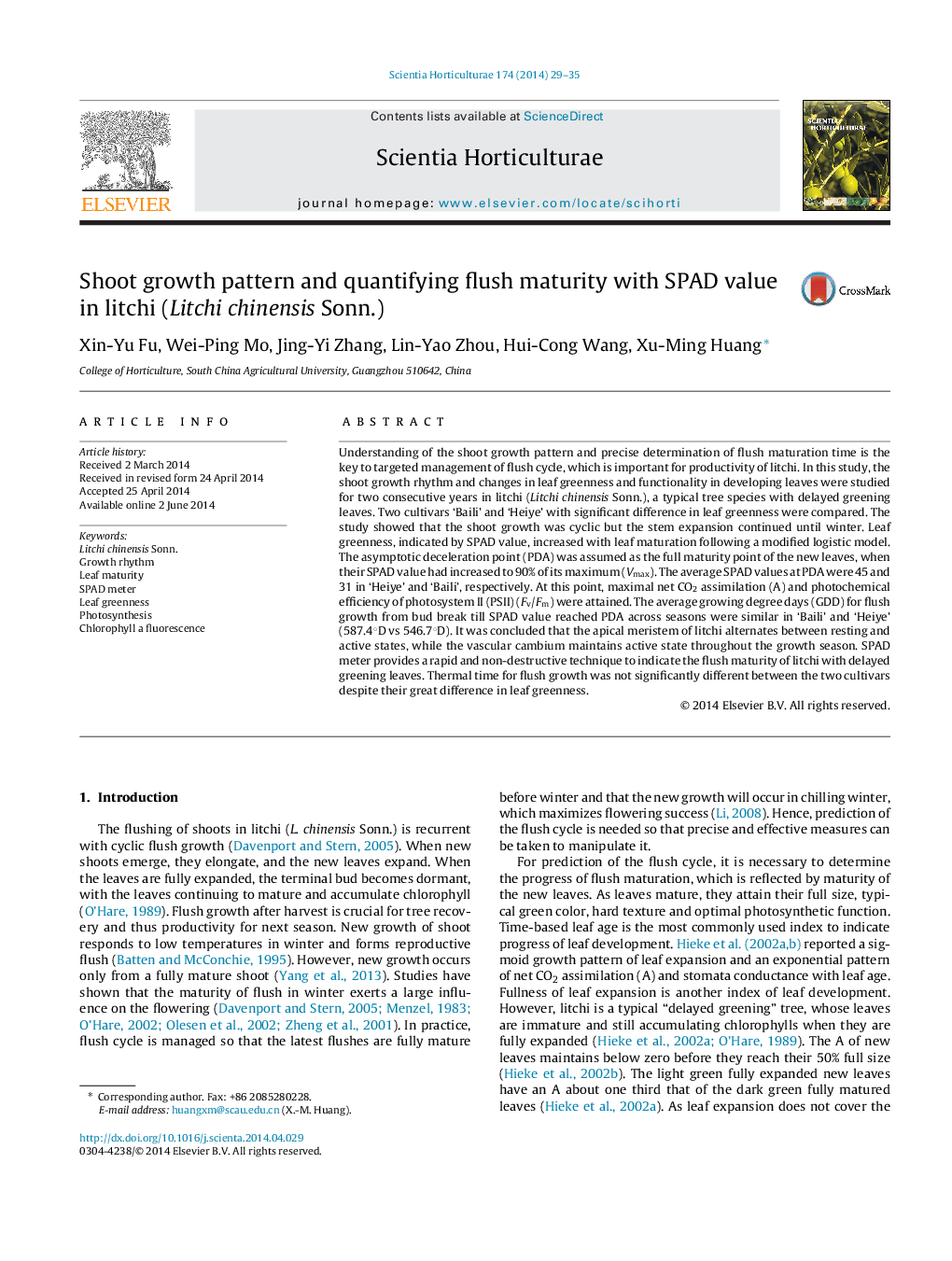| Article ID | Journal | Published Year | Pages | File Type |
|---|---|---|---|---|
| 4566705 | Scientia Horticulturae | 2014 | 7 Pages |
•Litchi flush growth is recurrent but stem expansion continuous.•SPAD meter, a handy tool to measure leaf greenness and flush maturity.•New leaf becomes fully mature when its SPAD value reaches 90% of its maximum.•Two phase change in photosynthesis with chlorophyll accumulation.•No difference in thermal time for flush growth among cvs differing in leaf greenness.
Understanding of the shoot growth pattern and precise determination of flush maturation time is the key to targeted management of flush cycle, which is important for productivity of litchi. In this study, the shoot growth rhythm and changes in leaf greenness and functionality in developing leaves were studied for two consecutive years in litchi (Litchi chinensis Sonn.), a typical tree species with delayed greening leaves. Two cultivars ‘Baili’ and ‘Heiye’ with significant difference in leaf greenness were compared. The study showed that the shoot growth was cyclic but the stem expansion continued until winter. Leaf greenness, indicated by SPAD value, increased with leaf maturation following a modified logistic model. The asymptotic deceleration point (PDA) was assumed as the full maturity point of the new leaves, when their SPAD value had increased to 90% of its maximum (Vmax). The average SPAD values at PDA were 45 and 31 in ‘Heiye’ and ‘Baili’, respectively. At this point, maximal net CO2 assimilation (A) and photochemical efficiency of photosystem II (PSII) (Fv/Fm) were attained. The average growing degree days (GDD) for flush growth from bud break till SPAD value reached PDA across seasons were similar in ‘Baili’ and ‘Heiye’ (587.4°D vs 546.7°D). It was concluded that the apical meristem of litchi alternates between resting and active states, while the vascular cambium maintains active state throughout the growth season. SPAD meter provides a rapid and non-destructive technique to indicate the flush maturity of litchi with delayed greening leaves. Thermal time for flush growth was not significantly different between the two cultivars despite their great difference in leaf greenness.
